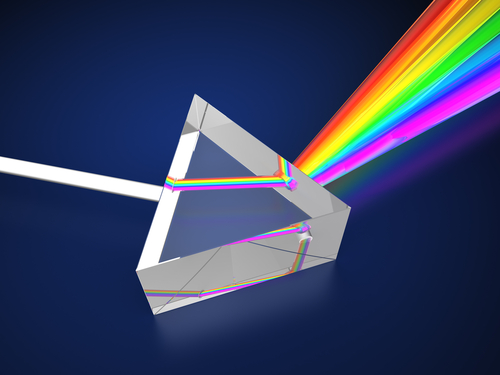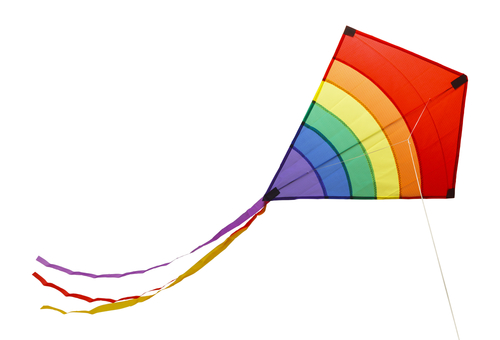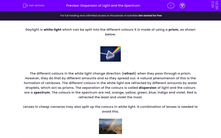You probably know that a rainbow is made of red, orange, yellow, green, blue, indigo, and violet light.

When we look at ordinary white light, we are actually looking at all the colours of the rainbow. They just happen to be all travelling together, which blends all the colours into white.
However, we are able to 'split' white light into its individual colours and create our rainbow if we use a certain type of glass block.
This glass block is a prism. It is a triangular piece of glass and splits white light, as shown below:

How does it work?
When light travels from the air to the glass, it will slow down. If it strikes the surface of the glass at an angle, it will also change direction. This is called refraction. As it leaves the glass and passes back into the air, it speeds up and changes direction again.
The different colours in the white light change direction (refract) when they pass through a prism. However, each colour refracts by a different amount. Red is refracted the least and violet the most. This is what causes them to spread out.
If we think again about rainbows, the different colours in the white light are refracted by different amounts by water droplets, which act as miniature prisms. The separation of the colours is called dispersion of light and the colours are a spectrum.

Lenses in cheap cameras may also split up the colours in white light. A combination of lenses is needed to avoid this.
Let's see if we can throw some light on the following questions!







